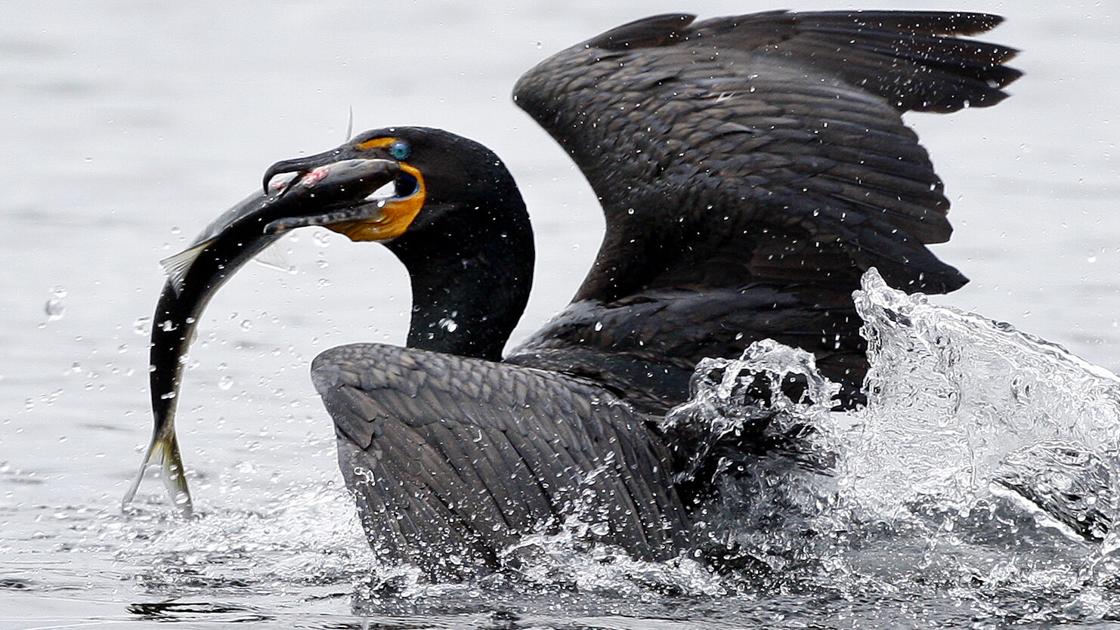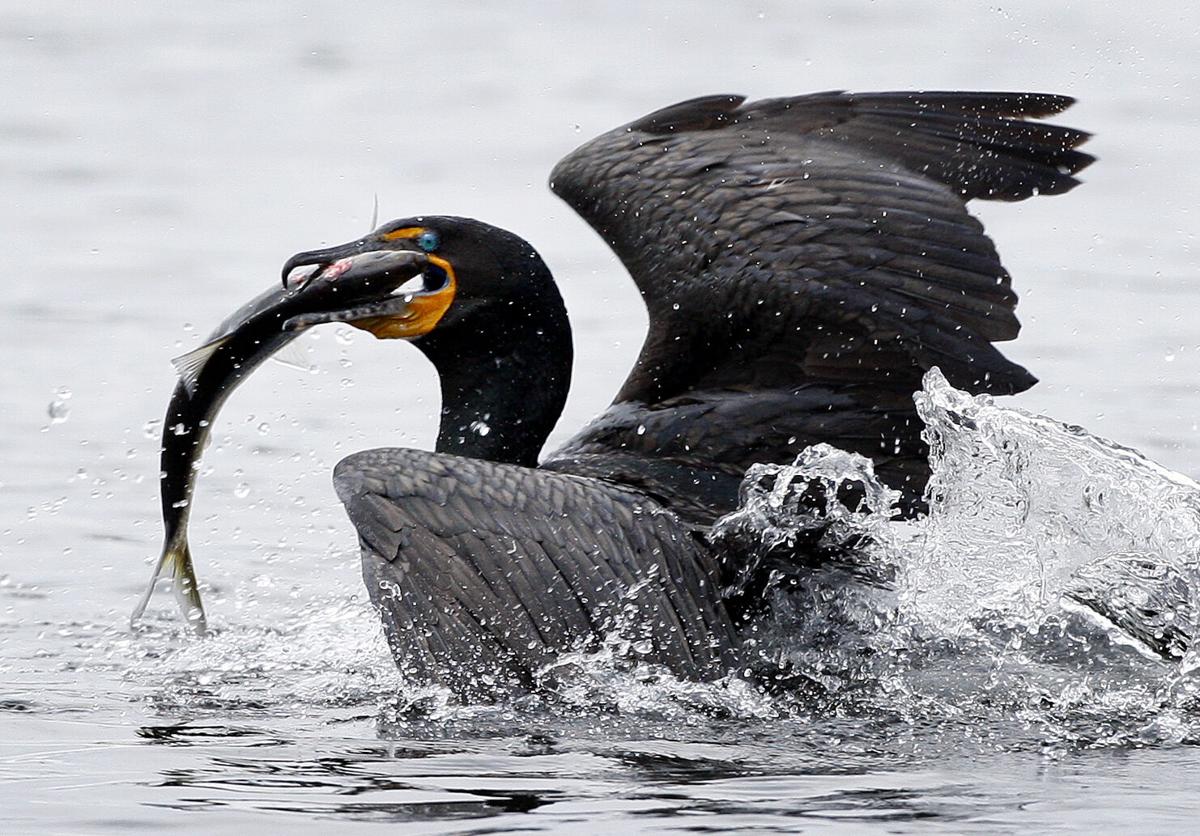

Double-crested cormorants have been in Central Texas for decades. Considered a nuisance to fisheries by many anglers, they’re skilled underwater swimmers, able to dive to depths of 60 feet and can stay submerged for up to six minutes.
As Americans sat around last Thanksgiving, eating their three plates of food before falling asleep on the recliner while watching the Cowboys lose, nobody in their wildest predictions could’ve imagined what 2020 had in store.
This year, as we round the corner into Thanksgiving week, we find our nation looking at COVID-19 numbers barreling in the wrong direction with only slivers of hopeful news to hang on to. Last week’s announcements of vaccine and treatment breakthroughs sounded promising, but the reality is that we’ve got a long, terrible chapter to go through before we find relief and normalcy.
In the meantime, we have to keep doing what we can and find new ways to do the things we’re used to doing. Last weekend’s CAST for Kids event on Lake Waco, for example, looked substantially different from years past, with a staggered schedule that allowed smaller groups of anglers to fish during allotted times.
The past few years, by contrast, featured numerous fishing industry personalities like Jimmy Houston, Danny King and a number of others flying to Central Texas to take part in banquets, auctions, media appearances, and a whole lot of group-oriented activities, including fishing, autograph sessions, workshops and more.
This year’s scaled-back event brought a lot of enjoyment to the participants — kids with disabilities and special needs — after being postponed earlier in the year, and the hopes and plans are to scale it back up to a brimming level for next year.
But the way we do some things has changed forever — not necessarily “instead of” change, but “also” change. For example, the way we communicate, sell our products and services, educate our kids, provide medical treatment, etc. have all been transformed by necessity, and after the COVID coast is clear, it’s doubtful that we’ll simply fall back into the old ways of doing things.
Fishing, hunting and other outdoor sports are, by nature, safer activities than ones that take place indoors or in close proximity to others, and even during the spring shutdown, those were exempt. We still don’t know how this will go, whether 2020 will go down in history as a terrible year or just the beginning of a bad run, but either way, outdoor recreation should be a viable option if done safely.
I’ve never been one of those doomsday people, and I’m not starting now. I am, however, glad to know that if I want to go catch or shoot my own food, I have the knowledge, skills and tools to do it. If there’s somebody in your household who could use a little fresh air, exercise and tasty fish and game to eat, there’s no better time to head to the outdoors and teach them some of your tricks than right now.
There are plenty of spots to catch fish in Central Texas, and it doesn’t take much in the way of equipment and expense to enjoy a day on the water. Lake Brazos offers quality riverbank access and the Texas Parks & Wildlife fisheries biologists make sure it’s stocked with fish. Just make sure everybody who needs a license has one and also be aware of size and possession limits.
TPWD biologists will begin stocking neighborhood lakes and other waters in Central Texas with rainbow trout beginning this week and continuing through the beginning of March. Check the TPWD website at tpwd.texas.gov for more information on locations and dates.
Considering cormorants
There are a lot of things (and people) I’d be happy to never see again. One of those is the cormorant, a bird that has never been anything more to me than a nuisance for raiding my fishing spots.
Cormorants have been in Central Texas for decades. Back in the 1980s and ’90s, their numbers seemed to swell and their fierceness when it comes to fishing made a negative impact on fisheries across the state. They nest in colonies and a single bird can eat or injure roughly three dozen small fish per day. They’ll also attack and injure or kill fish that are too large to swallow.
They’re skilled underwater swimmers, able to dive to depths of 60 feet and can stay submerged for up to six minutes, according to wildlife biologist Josh Sears. In the early 2000s, Texas issued permits to allow landowners to control cormorant populations on their land, but that program was suspended. Cormorants are protected by federal law.
Biologist John Karges still hears anglers blaming these birds for declining fisheries on occasion, but it’s not as widespread. He said he presumes that anglers just came to accept them as part of the equation.
There are still depredation permits issued, but recipients are usually water body managers and other government-based entities.
Not everybody looks down on these birds as a scourge, though, and that old saying about one man’s trash being another man’s treasure holds true for cormorants. As reviled as they are in the Lone Star State, in other parts of the world, they’re seen as valuable assets to fishermen.
East Asians use these birds to do the fishing for them. Fishermen put leashes on cormorants, then tie a rope or place a ring around their necks to prevent them from being able to swallow the fish they catch. After each dive, the birds are pulled aboard and with their mouths held open, regurgitate the fish they’ve swallowed. Then it’s back into the water for another round of action. Most cormorants can hold as many as six fish in their throats at a time.
In some places, fish that have been caught by cormorants are prized fare and fetch higher prices at the market. To me, though, a fish loses value once it has been swallowed and regurgitated by a bird.
Get local news delivered to your inbox!
November 22, 2020 at 06:03AM
https://ift.tt/35SSqAA
Outdoors: Now more than ever, keeping up hunting, fishing skills important - Waco Tribune-Herald
https://ift.tt/35JkYuc
Fish
No comments:
Post a Comment